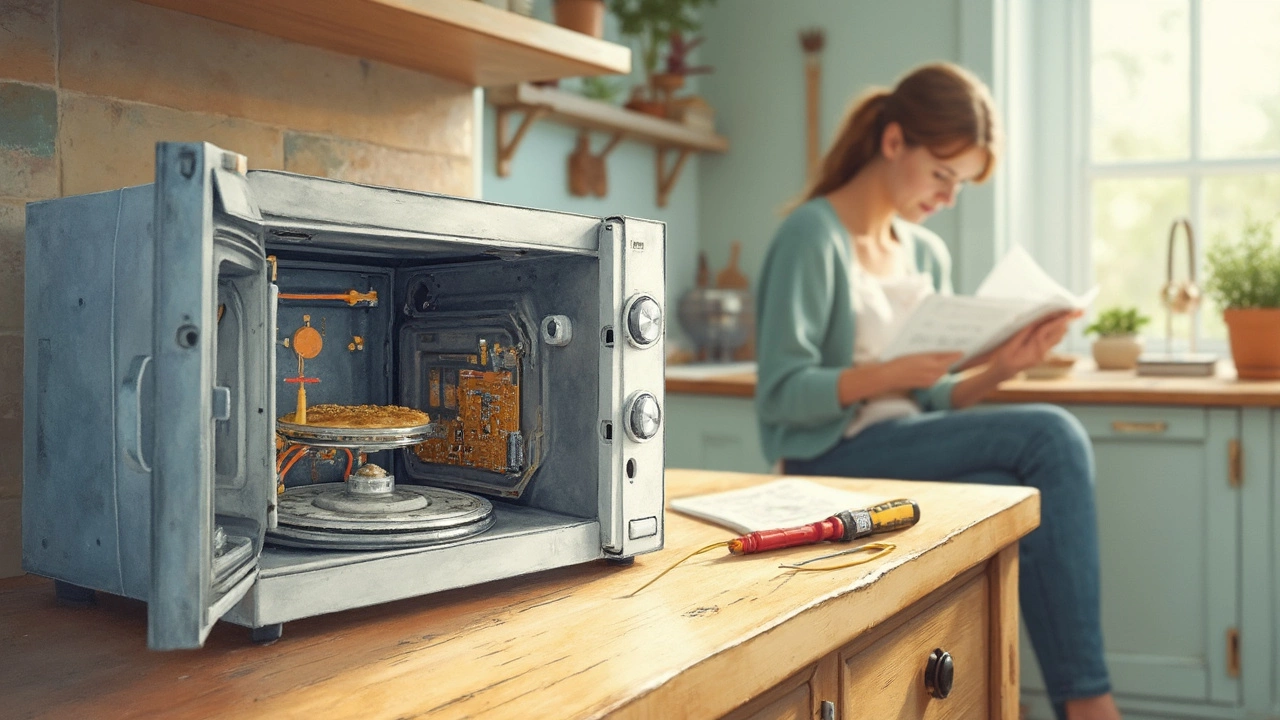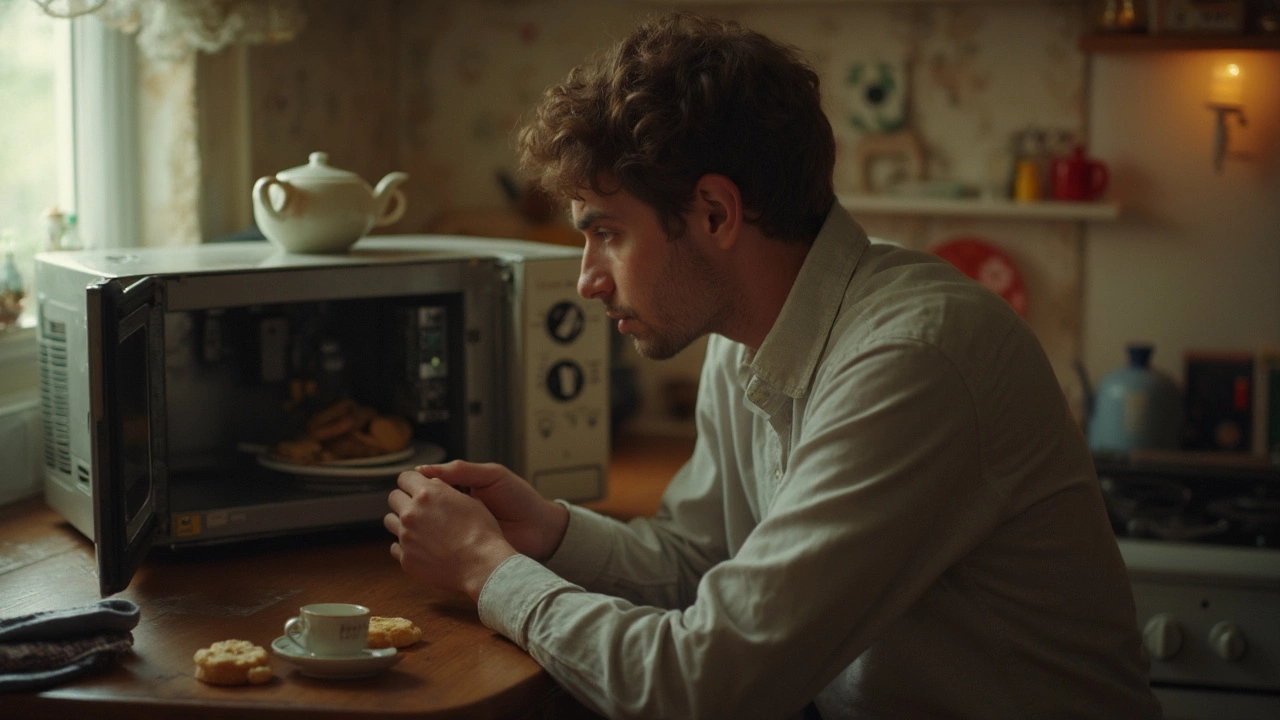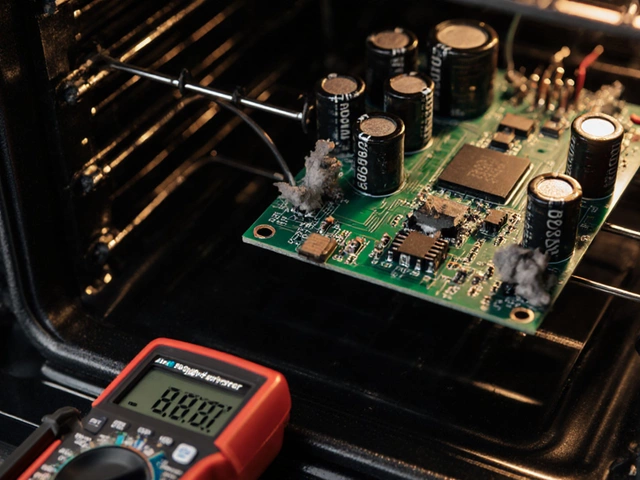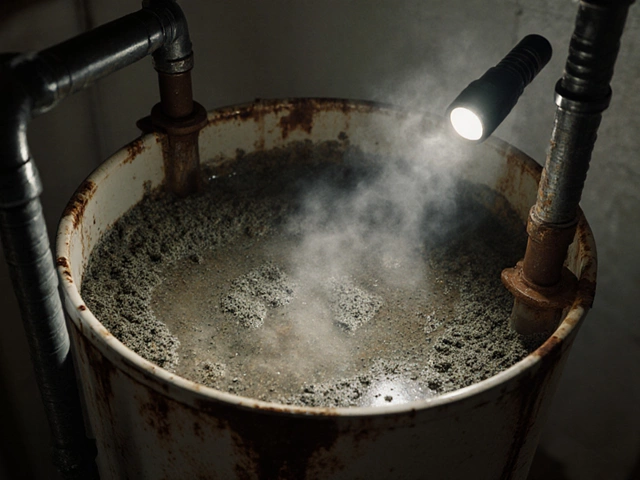So, your microwave's gone haywire, huh? Before you toss it out and spend money on a new one, hold up! A lot of microwave problems are actually easier to fix than you'd think. Let's talk about when it's doable to get your hands a bit dirty and when it's better to call in the pros.
First things first, not all microwave issues are equal. From unusual noises to a door that won't latch, there are a bunch of common hiccups that come with quick fixes. But before you start, remember, safety is number one. That little appliance packs a big punch of power.
Sure, it's tempting to grab a screwdriver and dive in, but let's make sure you’re doing it right. Small glitches like a faulty turntable or a dim display can often be fixed without too much hassle or risk. Ready to learn how? Let's unravel the mystery behind microwave repairs!
- Understanding the Basics
- Safety First!
- Common Microwave Problems
- DIY Repairs You Can Do
- When to Call a Professional
Understanding the Basics
Before you dive into fixing your microwave, it’s good to know what you're dealing with under the hood. Microwaves are basically high-frequency radio signals, and they’re generated by a device called the magnetron. Sounds fancy, right? But don’t worry, you're not building a space shuttle here.
Most microwaves follow a simple setup which includes a turntable motor to spin your food, a control board that acts like the microwave's brain, and a door switch — super crucial for safety.
Key Components
- Magnetron: This is the star of the show, responsible for the actual cooking action.
- Control Panel: Where you punch in your heating commands. If it's dead, your microwave is more paperweight than appliance.
- Cavity and Door: This contains the whole show and makes sure no pesky waves escape to cook things outside.
Getting Familiar with Functions
Take time to understand the basic functions on your microwave. While it's easy to hit quick reheat, knowing defrost settings or sensor cooking can be game-changers. Also, check if your manual mentions 'self-diagnostics' — some newer models do!
Armed with this basic knowledge, you’ll be better prepared to tackle any issues that pop up. Besides, feeling like a part-time microwave repair expert isn’t too shabby, right?
Safety First!
Before you even think about opening up your microwave, let's talk safety. This isn't just your average appliance repair—a microwave stores high-voltage electricity even when it's unplugged, thanks to its capacitor. If handled wrong, it could give you a serious zap.
The Big Shocker: Capacitors
Yep, capacitors can hold a charge for a surprisingly long time, just waiting to catch you off guard. Always unplug your microwave and let it sit for a while to allow stored energy to dissipate. If you're unsure, don't risk it—leave capacitor discharge to the professionals. A slip-up here could be life-threatening.
Basic Safety Gear
If you're venturing inside, don some personal protective equipment. We're talking gloves and eye protection. No one plans on having a screwdriver slip, but it can happen.
Easy Does It on Smells and Sparks
If your microwave shows signs of arcing (you might see sparks or smell burning plastic), don’t use it until you fix the issue. These signs often indicate a problem with the waveguide cover or a short circuit. It’s not something you want to let linger.
Safety Checklist
- Unplug the microwave before opening it.
- Allow it to sit to discharge.
- Use insulated tools if you need to get close to the circuitry.
- Work in a dry environment to avoid slips and shocks.
Convenient as they are, microwave ovens can be dangerous if not handled with care. Keep these safety tips in mind, and you should be in good shape for tackling some of those pesky repairs.
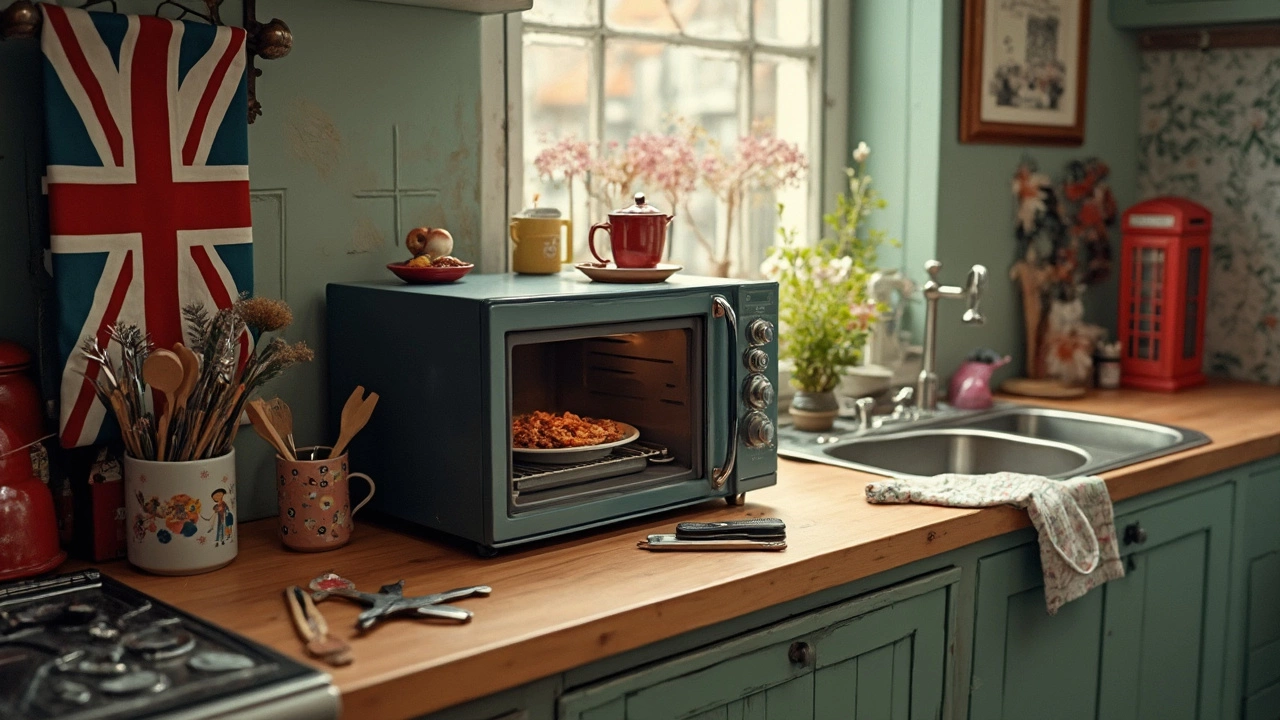
Common Microwave Problems
If your microwave is acting up, you're not alone. Let's break down some of the most common issues homes face. Remember, a lot of these are fixable without breaking the bank or your brain. Let's dive into it!
The Microwave Won't Turn On
First up, if your microwave has decided it's on permanent holiday mode and won't turn on, don’t panic just yet. Check the power supply. Make sure it's plugged in and the outlet is working. Try a different appliance to test the outlet. If that fails, it might be an internal fuse issue, which is usually a quick fix inside the control panel. But be safe!
Strange Noises Coming From the Microwave
Unusual sounds can be eerie, but most times, it's a mechanical issue, not a ghost. If the turntable won’t spin, it could be as straightforward as cleaning the turntable guide or checking the roller ring. Sometimes, debris makes its way into the spinning mechanism, causing it to grind and growl. A good cleaning might just solve the problem.
The Microwave Door Won't Close
A microwave door that refuses to latch can be annoyingly stubborn. Often, it’s a matter of the door hooks or hinges. A quick visual inspection can reveal if they’re misaligned or damaged. Lay off any Herculean strength when dealing with it; instead, a careful tweak might be all it takes.
Not Heating Properly
Ever set something to cook only to find it cold as ice? Chances are, there's trouble with the magnetron or a related component. These parts convert electricity into those microwaves that heat your food. It may be time to call in a pro for this, as tampering with the magnetron can be hazardous.
Buttons Not Responding
It’s like your microwave is giving you the silent treatment. Often, it's just residue on the touchpad or a glitch that resolves with a reset. But if it persists, the control board might need a look-see. A gentle cleaning cloth can sometimes work wonders!
Here's a quick view of how often folks encounter these issues in their appliances:
| Issue | Percentage of Cases |
|---|---|
| Won't Turn On | 25% |
| Strange Noises | 20% |
| Door Issues | 15% |
| Heating Problems | 30% |
| Button Malfunction | 10% |
See? You’re definitely not alone, and now you’re armed with a little more know-how to tackle these problems head-on. Keep these tips in your back pocket next time your microwave decides to act up!
DIY Repairs You Can Do
Think you need a degree to fix a broken microwave? Not always! There are some common issues that you can tackle yourself with a bit of confidence and caution.
Fixing a Stubborn Turntable
A turntable that won't spin can be a dinner disaster. This can often be fixed without breaking a sweat. Here's what you can do:
- Check the Roller Guide: Make sure it’s properly aligned. Sometimes it just needs a gentle nudge back into place.
- Inspect the Turntable Coupler: This is the little gizmo beneath the glass tray. Ensure it's connected securely to the motor shaft.
- Broken Motor? If everything seems fine, the motor might be the culprit. Replacing it is doable, but you'll need to order the right part for your model.
The Noisy Microwave
If your microwave is rocking more than a concert, it might be a loose part rattling around. Here’s how to handle it:
- Unplug First! Safety first, folks. Make sure there's no power running through it.
- Tighten Any Loose Screws: Sometimes the rattling is just a loose screw inside or on the outer casing. A quick tightening can keep it steady.
- Check the Fan Blades: If the sound remains, check for obstructions or damages in the fan blades before seeking a replacement.
Dealing with a Dim Display
If you find yourself squinting to read your microwave's display, it could be due to dim or flickering LED lights.
- Inspect the Board: Sometimes, dirt or dust can accumulate on the circuit board, which can cause connectivity issues with the display.
- Replace LED Bulbs: If cleaning didn't help, consider replacing the dim LED bulbs with new ones. Make sure you get the right type specific to your microwave model.
Sometimes the seemingly scariest issues just need a little DIY magic. But hey, if it feels like too much, there's no shame in calling a pro! Tackling some repairs on your own can save both time and money. And who doesn't like a bit of extra savings, right?

When to Call a Professional
Alright, let's face it—there are times when you need to throw in the towel and let the experts handle the job. Knowing when to call a professional can save you time, prevent further damage, and keep you safe.
Electrical Issues
If your microwave has electrical problems, like sparking or a burning smell, stop using it immediately. Electricity can be dangerous, and without the right tools and know-how, you could easily make the problem worse, or put yourself at risk. When in doubt, leave electrical problems to the pros.
Strange Noises or Odors
Does your microwave sound like it's getting ready for take-off? Unusual noises, especially grinding or loud buzzing, could mean your microwave’s magnetron or another critical component is failing. The same goes for persistent odors. These aren't typical DIY fixes and usually require special equipment and parts that only a professional can provide.
Complex Repairs
Ever tried replacing a magnetron or a high-voltage capacitor? It's no small task. These repairs require specific tools and expertise to ensure they’re done correctly. Attempting to fix these without proper training can be dangerous since they involve high-voltage components.
Warranty Considerations
Have a look at your microwave warranty. Attempting certain repairs on your own might void it. If your appliance is still covered, it’s smart to let the manufacturer’s authorized service provider handle things.
Here's a quick overview of situations where calling a pro is the way to go:
- Sparking or electrical smells
- Persistent strange noises or odors
- Repairs on critical components like magnetrons
- When your warranty is at stake

